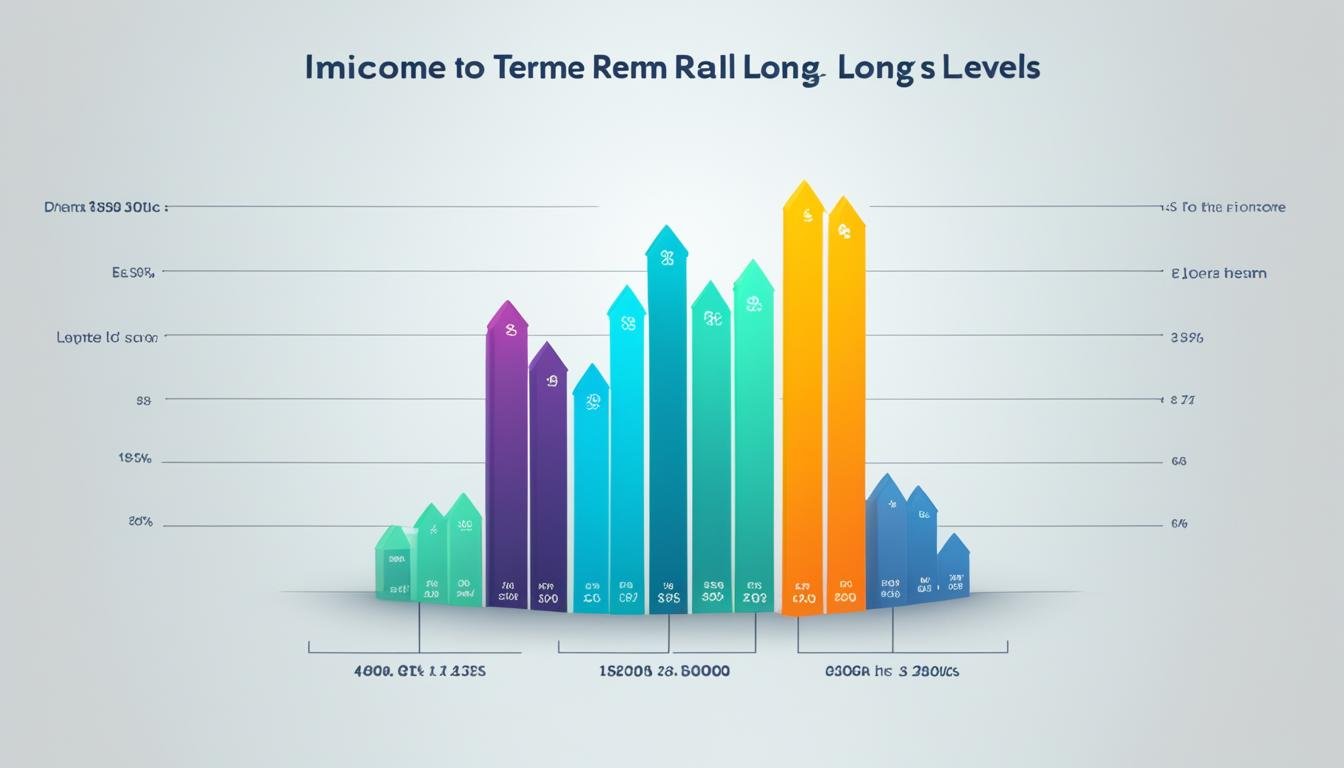Finding Your Ideal Audience for Long-Term Rentals is key. Knowing who might want to live there can boost how much you earn and how often your space is filled. It starts with understanding what possible tenants might like and who they are.
Doing your homework on the rental market is a must. By asking people, searching online, and looking at local data, you get a picture of what renters want. This helps you tweak your place to attract the kind of tenants you’re aiming for.
Working with pros, like DeSelms Property Management, is a smart move. They can get your property the spotlight it needs. Plus, keeping an eye on the market’s ups and downs helps you stay ahead. This way, you can set the right rent, upgrade smart, and market well.
Key Takeaways
- Identifying the target market is crucial for rental property success.
- Market research informs property selection, customization, and advertising.
- Tailoring properties to specific tenant preferences boosts occupancy rates.
- Effective marketing through property management partnerships enhances visibility.
- Continuous market analysis supports strategic rental pricing and improvements.
Understanding the Importance of Finding Your Ideal Audience for Long-Term Rentals
Income demographics are key in rental market strategies. Landlords learn what different income groups can afford and like. They then improve how they rent properties, helping tenants meet their goals and making more money.
Income Segmentation and Your Audience
Dividing potential tenants by income helps a lot. It shows what renters of different means want in a home. This includes knowing their disposable income and what they look for in a rental.
Income Brackets: Targeting High-Income Renters vs. Middle-Income Households
Those with more money often want luxury in their rentals. They desire features like top-end finishes and smart tech. On the other hand, middle-income groups seek affordable, quality homes. They focus on places that are easy to get to, have shared spaces, and offer good value.
| Income Bracket | Preferences | Key Features |
|---|---|---|
| High-Income Renters | Luxury, exclusivity, premium amenities | Smart home tech, high-end finishes, concierge services |
| Middle-Income Households | Affordability, quality living space | Accessibility, community amenities, good value |
Low-Income Housing Considerations
With low-income housing, focus on affordability. It’s vital to know this group’s financial situation. This helps offer homes they can sustain, maybe through subsidies or budget-friendly design.
Meeting the needs of low-income families means providing real housing solutions.
Conducting Market Research to Identify Your Target Audience
To run a rental property well, it’s crucial to know your audience. You must do thorough market research. This research helps you learn what potential tenants want and need. It also lets you understand their habits. By knowing this, you can make your rental spaces more appealing. This process includes steps to analyze market demand, income trends, and the economy’s health.
Methods of Gathering Data
Gathering accurate data is key to finding your target audience. You can use surveys, online research, and studying the local market. Surveys can reveal what tenants like and what they need in a rental. They also show their income and housing preferences. Online research looks at trends on real estate sites and social media. Studying the local market means checking the economy and the people living there.
Analyzing Local Market Demand
Knowing what your local market wants is very important. Look at competition, empty rentals, and what tenants like. This helps you spot new trends and find special areas to focus on. By doing this, you can develop a plan that meets what people are looking for. It also makes your property more desirable.
Studying Income Trends and Economic Status
Looking deeply into income and economic trends is key to predicting the market’s future needs. By doing this, landlords can guess how affordable their rentals are. This also affects how much people can spend after bills. Such analysis helps set fair rental prices. It gives a big picture of economic changes that can affect your rentals.
| Method | Purpose | Benefits |
|---|---|---|
| Surveys | Understand tenant preferences | Tailored property customization |
| Online Research | Study rental trends | Identify market opportunities |
| Local Market Analysis | Observe local demand | Strategic planning |
| Income Trend Analysis | Predict shifts in affordability | Informed pricing strategies |
Long-Term Rental Income Levels: Key Insights
It’s key for property investors to understand Long-Term Rental Income Levels. They aim to create steady streams of income. This involves setting the right rental prices that match what tenants can pay. But, it must also ensure profit for the owner.
Checking what tenants earn is crucial. This process confirms they can afford the rent. It helps set a fair rent-to-income ratio, making sure the rental is affordable.
Keeping rentals affordable while meeting financial goals needs market know-how. A smart approach to pricing attracts the right renters. This keeps the Long-Term Rental Income Levels stable.
Landlords need to be careful in checking their potential tenants’ money situation. Verifying their income thoroughly is a must. This helps avoid risks and keeps the rental income steady. Finding this balance ensures a good rent-to-income ratio and long-term success.
Tailoring Your Rental Properties to Meet Income-Based Needs
It’s key to know and meet the income-based needs of those looking to rent from you. By adjusting your properties to these different needs, you’ll likely see more renters, and they’ll be happier.
Customizing for High-Income Renters
People with high incomes like to rent luxurious places. They want the best, such as top-notch appliances, fancy bathrooms, and the latest in security. Focus on making their space private, roomy, and full of conveniences to create an upscale home.
Meeting the Needs of Middle-Income Households
Those with average incomes want a value for their money. For them, make sure the property is well-kept and functional. Offer good amenities at affordable prices, with flexible leasing and services like laundry on-site.
Strategies for Affordable Housing
Making sure those looking for affordable homes have what they need requires smart planning. Use budget-friendly operations and amenities. Checking tenants’ incomes helps keep your property stable while being fair. This lets you offer good homes to those with less to spend, without lowering your standards.
Marketing and Advertising Strategies for Different Income Groups
Knowing how to reach your audience effectively is key for successful rental investments. These strategies are designed for various income levels in the rental market.
Income-Specific Marketing Techniques
Strategies for different incomes involve crafting messages and using media that match their spending habits and lifestyles. This helps your listings stand out in the rental crowd. Addressing their unique needs and wants boosts your property’s appeal.
Effective Use of Income-Targeted Advertising
Targeting ads by income means picking the right places and ads that fit their financial and living needs. Ad strategies for high-earners or average families should focus on what’s important to them. This way, your ads will hit the right people, bringing better returns on your marketing.
Harnessing Social Media and Online Platforms
Online and social platforms have changed how we market properties, bringing new ways to showcase them and engage with potential tenants. Using these tools lets you share attractive property visuals, drawing in interested viewers. With social media, you can aim your ads precisely, making sure your listings reach the most relevant viewers. Facebook, Instagram, and LinkedIn have great tools for income-specific ads, making it easier to target your preferred audience.
Verifying Tenant Income and Financial Capability
It’s key to make sure potential tenants are financially stable. By checking their income and money management, we reduce risks and make sure renting is fair.
Methods for Tenant Income Verification
There are a few ways to make sure tenants make enough money. Landlords often ask for documents like pay stubs, taxes, and bank statements. Using verification services can make this check more precise and reliable.
Financial capability is a cornerstone of responsible tenant screening, ensuring renters can consistently meet their financial obligations.
Assessing Rent-to-Income Ratio
It’s also important to look at how much of their income goes towards rent. This balance check makes sure the rent price is fair. Ideally, not more than 30% of a tenant’s monthly income should go to rent. It helps check if tenants can keep up with payments regularly, which is good for landlords.
| Verification Method | Description |
|---|---|
| Pay Stubs | Recent pay stubs show how much someone is making and if they have a stable job. |
| Tax Returns | Looking at yearly taxes gives us an overall picture of someone’s financial health. |
| Bank Statements | These statements tell us about monthly money flow and how someone manages their money. |
| Third-Party Verification Services | Getting help from outside services makes the verification stronger and more thorough. |
Combining these checks on tenant incomes and the rent-to-income ratio ensures your tenants can handle paying rent long term. It makes renting more fair and financially secure for property owners.
Conclusion
Finding the right people for your long-term rentals involves using key income info. Knowing the income levels helps you design your rentals to match what they want. This approach makes it more likely your places will be full and helps keep the renters there.
It’s vital to keep checking the market to adjust to any money changes. Take in data from surveys and research to stay on top of what renters want and need. Use this info to wisely pick and take care of your properties.
It’s smart to always be looking into the market and who your renters might be. This keeps your rentals filled and running well. Property managers should always look for new ways to keep their rentals a success. By doing this, you make sure your investment in rentals is always rewarding.




